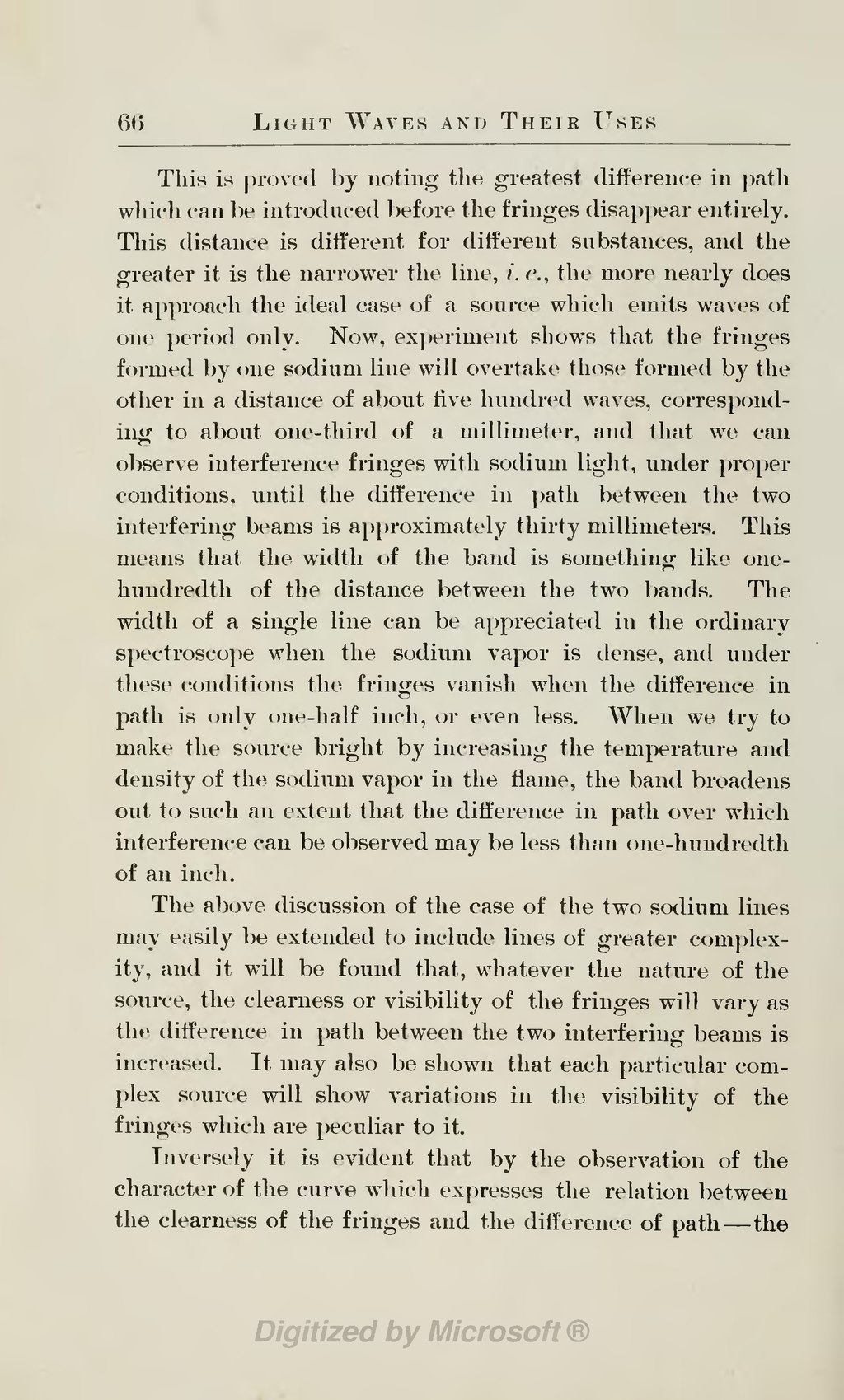This is proved by noting the greatest difference in path which can be introduced before the fringes disappear entirely. This distance is different for different substances, and the greater it is the narrower the line, i. e., the more nearly does it approach the ideal case of a source which emits waves of one period only. Now, experiment shows that the fringes formed by one sodium line will overtake those formed by the other in a distance of about five hundred waves, corresponding to about one-third of a millimeter, and that we can observe interference fringes with sodium light, under proper conditions, until the difference in path between the two interfering beams is approximately thirty millimeters. This means that the width of the band is something like one-hundredth of the distance between the two bands. The width of a single line can be appreciated in the ordinary spectroscope when the sodium vapor is dense, and under these conditions the fringes vanish when the difference in path is only one-half inch, or even less. When we try to make the source bright by increasing the temperature and density of the sodium vapor in the flame, the band broadens out to such an extent that the difference in path over which interference can be observed may be less than one-hundredth of an inch.
The above discussion of the case of the two sodium lines may easily be extended to include lines of greater complexity, and it will be found that, whatever the nature of the source, the clearness or visibility of the fringes will vary as the difference in path between the two interfering beams is increased. It may also be shown that each particular complex source will show variations in the visibility of the fringes which are peculiar to it.
Inversely it is evident that by the observation of the character of the curve which expresses the relation between the clearness of the fringes and the difference of path—the
